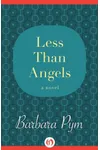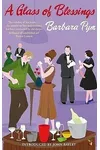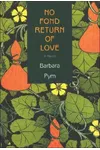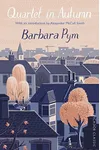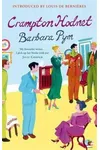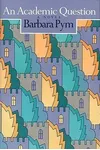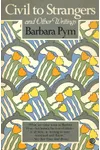Picture a British novelist who spun quiet village life into witty, heartfelt tales—meet Barbara Pym! Born in 1913, Pym crafted social comedies that captured the quirks of mid-20th century England with a keen eye and gentle humor. Her stories of spinsters, vicars, and jumble sales might sound quaint, but they’re packed with sharp insights that still charm readers today.
After early success in the 1950s, Pym faced a literary wilderness when publishers deemed her work outdated. But in 1977, a remarkable revival—sparked by poet Philip Larkin and critic Lord David Cecil naming her the century’s most underrated writer—brought her back into the spotlight, earning her a Booker Prize nomination and a lasting legacy.
The Making of Barbara Pym
Barbara Mary Crampton Pym was born on June 2, 1913, in Oswestry, Shropshire, to a solicitor father and a musically inclined mother who played the organ at St. Oswald’s church. Growing up in a creative household, young Barbara staged plays and penned stories, inspired by authors like Aldous Huxley. At 18, she headed to St. Hilda’s College, Oxford, to study English, where she formed lifelong friendships and fell for a string of unsuitable suitors—romances that later fueled her novels’ bittersweet humor.
During World War II, Pym served in the Women’s Royal Naval Service, and post-war, she worked at the International African Institute in London, editing the journal Africa. These experiences sharpened her observational skills, turning everyday encounters into literary gold. By 1950, she published her first novel, launching a career that would quietly redefine the comedy of manners.
Barbara Pym’s Unforgettable Stories
Pym’s novels are like a cozy tea party with a side of sly wit. Her debut, Some Tame Gazelle (1950), follows spinster sisters navigating love and village life, a playful nod to her Oxford days. Excellent Women (1952), her most famous work, stars Mildred Lathbury, a clergyman’s daughter entangled in others’ dramas, showcasing Pym’s knack for making the mundane profound. A Glass of Blessings (1958) explores a bored housewife’s romantic fantasies, blending humor with poignant longing.
In her later years, Pym’s tone grew darker. Quartet in Autumn (1977), shortlisted for the Booker Prize, portrays four aging office workers grappling with loneliness, its stark realism earning critical acclaim. The Sweet Dove Died (1978) dives into obsessive love, revealing Pym’s versatility. Her style—ironic dialogue, vivid characters, and Anglican church settings—draws comparisons to Jane Austen, but Pym’s focus on overlooked women gives her work a unique edge.
Anthropologists, vicars, and spinsters populate Pym’s world, their small joys and sorrows illuminated with empathy. Her novels aren’t plot-driven but shine through characterization, making readers laugh and ache in equal measure. As Philip Larkin put it, he’d “sooner read a new Barbara Pym than a new Jane Austen.”
Why Barbara Pym Matters
Pym’s revival in 1977 wasn’t just a personal triumph; it cemented her as a literary treasure. Her novels capture the resilience of ordinary women—often single, often underestimated—whose quiet strength resonates across generations. The Barbara Pym Society, founded in 1994, keeps her legacy alive with annual meetings, while readers worldwide return to her books for their humor and humanity.
In a fast-paced world, Pym’s focus on life’s small moments feels like a gentle rebellion. Novelists like Anne Tyler and Shirley Hazzard have praised her daring tenderness, and her influence lingers in modern stories of understated lives. Pym reminds us that even the quietest existence holds profound stories worth telling.
- Born: June 2, 1913, Oswestry, Shropshire
- Key Works: Excellent Women, Quartet in Autumn, A Glass of Blessings
- Awards: Fellow of the Royal Society of Literature, Booker Prize nominee (1977)
Snag Excellent Women and dive into Barbara Pym’s witty, heartfelt world—perfect for anyone who loves a story that finds magic in the everyday!



